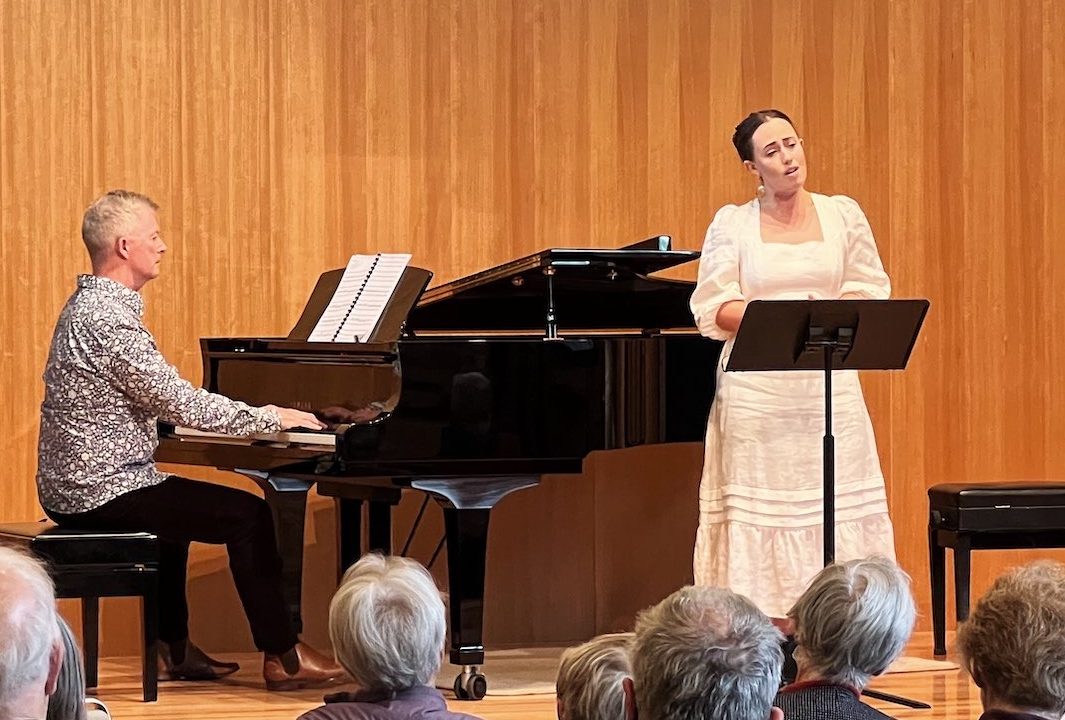
Music / “Becoming Beatrix”, The Song Company – Chloe Lankshear, soprano, Francis Greep, piano. At Wesley Music Centre May 14. Reviewed by LEN POWER.
BEATRIX Potter was the author of “The Tale of Peter Rabbit” and 22 other stories that are still popular with children more than 100 years later.
She was also an artist, conservationist and researcher and left more than 1400 hectares of land to the National Trust in Britain. Her life story is a fascinating one and her achievements as a woman at the start of the 20th century were considerable.
Soprano Chloe Lankshear and pianist Francis Greep have fashioned Potter’s story into an entertainment of songs linked by recorded excerpts of “Beatrix Potter: Artist, Storyteller and Countrywoman” by Judy Taylor as read by Patricia Routledge.The chosen songs commented on particular times in Potter’s life.
The songs were by a wide range of composers including Sally Whitwell, Claude Debussy, Robert Schumann, Ross Edwards, Aaron Copland and others.
Dressed in period costume, Lankshear presented the songs with a few well-chosen props to set the scene. As the recorded excerpts about Potter’s life played between the songs, she stayed in character, creating an impressive period atmosphere for the whole concert.
The program began with two songs by Sally Whitwell to poems by Christina Rossetti.Both “Skylark” and “Linnet” set the scene for Beatrix Potter’s love of nature. Chloe Lankshear’s beautiful, clear singing of these joyous songs was delightful.
This happy mood continued with three more atmospheric songs of nature. “Les Papillons” (The butterflies) by Claude Debussy was followed by “Le Rossignol des Lilas” (The nightingale in the lilac) by Reynaldo Hahn and “Er ist’s” (Spring is here!) by Hugo Wolf. All were sung with skill and warmth and conveyed a sense of Potter’s deep love of nature. Francis Greep’s playing of “Er ist’s” was especially notable.
The program continued with romantic songs underlining Potter’s engagement to Norman Warne and then turned darker to reflect the tragedy of Warne’s sudden death. Two works by George Crumb, “Wind Elegy” and “Let it be Forgotten” were sung with particular delicacy and great feeling.
The next work, “To A Child”, from the poem by Judith Wright with music by Ross Edwards, was also given a fine, reflective performance.
It was followed by the highlight of the program, “Warble for Lilac Time” from the poem by Walt Whitman with music by Elliott Carter.
This dramatic work was superbly sung, clearly showing Lankshear’s technical skills. Francis Greep’s piano playing of this complex work was excellent.
This fine program of songs finished with an appropriately sensitive performance of “Nature, the Gentlest Mother” by Aaron Copland to the words of Emily Dickinson.
Who can be trusted?
In a world of spin and confusion, there’s never been a more important time to support independent journalism in Canberra.
If you trust our work online and want to enforce the power of independent voices, I invite you to make a small contribution.
Every dollar of support is invested back into our journalism to help keep citynews.com.au strong and free.
Thank you,
Ian Meikle, editor




Leave a Reply